Verona is home to a wide variety of birds. With its rich natural environment, it is a paradise for avian enthusiasts. The city is home to over 200 different species of birds, including common garden birds, waterfowl, raptors, and migratory species.
Verona’s large parks and open areas provide ideal habitats for many species of birds, while the nearby lagoon and Adige River provide a vital source of food and shelter for other species.
Whether you’re an experienced birdwatcher or just looking to enjoy the beauty of these feathered creatures, Verona is a great place to observe them.
1. Grey Heron
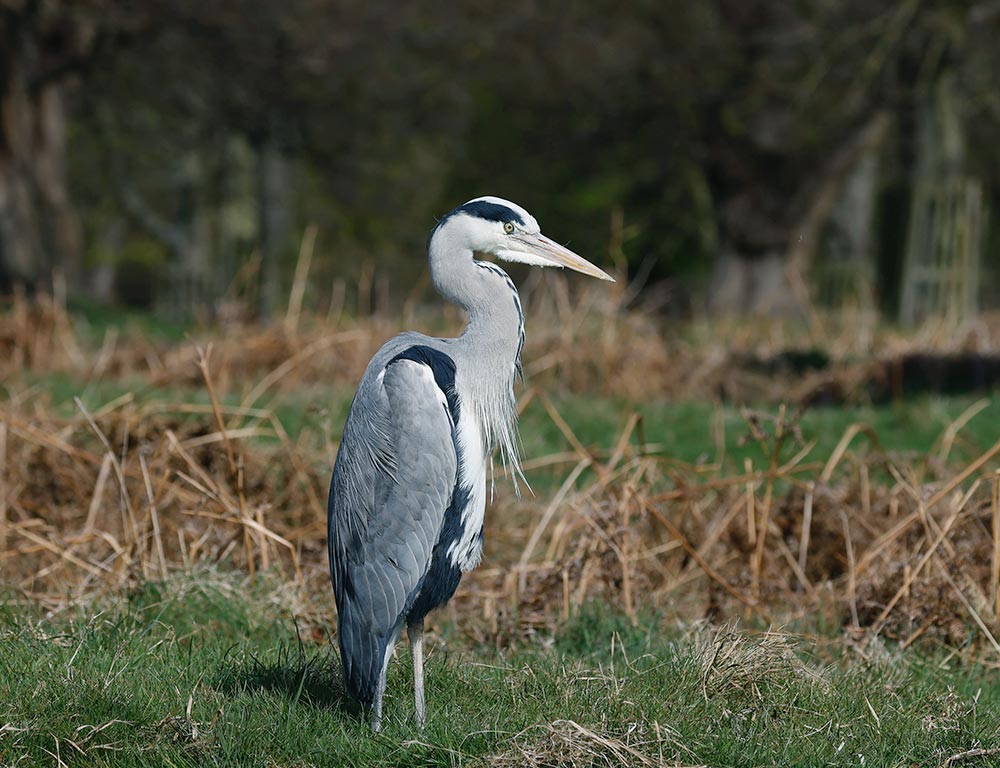
The grey heron is a species of long-legged wading bird that is part of the heron family, Ardeidae. It is native to temperate regions in Europe, Asia, and parts of Africa.
Generally speaking, the grey heron is a resident species, meaning that it stays in its habitat throughout the year. However, some populations in the northern parts of the range tend to migrate southwards during the autumn season.
This is likely because these areas experience colder temperatures during the winter, making it difficult for the birds to survive. As temperatures become milder in the south, the herons can find more suitable conditions for living and breeding.
| Kingdom | Animalia |
| Phylum | Chordata |
| Class | Aves |
| Order | Pelecaniformes |
| Family | Ardeidae |
| Genus | Ardea |
| Species | A. cinerea |
2. Great Crested Grebe
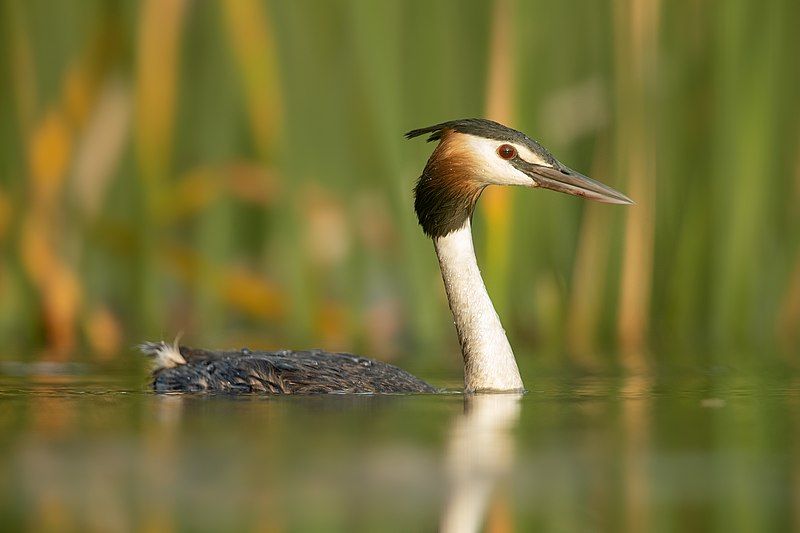
The great crested grebe is a unique species of water bird found across parts of Europe, Asia, and Africa. It is a member of the Grebe family and stands out for its distinctive physical features and colorful plumage.
Its most remarkable characteristic, however, is its elaborate mating display, which is appreciated for its beauty and complexity. During the courtship period, the male and female great crested grebes swim around each other in circles, bobbing their heads and dipping their bodies.
They also perform a series of synchronized movements, such as shaking their wings and making a peculiar call.
This courtship display is thought to be an important part of the grebes’ mating ritual and is believed to help the two birds bond and form a lasting pair. The great crested grebe has a complex breeding behavior, which involves elaborate rituals such as nest building and incubating eggs.
The female typically lays three to four eggs and both parents take part in the incubation process.
Once the eggs have hatched, the parents take turns caring for the young birds. The great crested grebe is a fascinating species of bird and its elaborate mating display is one of its most remarkable features.
It is a testament to the beauty and complexity of nature, and it is an important part of the grebes’ breeding season.
| Kingdom | Animalia |
| Phylum | Chordata |
| Class | Aves |
| Order | Podicipediformes |
| Family | Podicipedidae |
| Genus | Podiceps |
| Species | P. cristatus |
3. Little Grebe
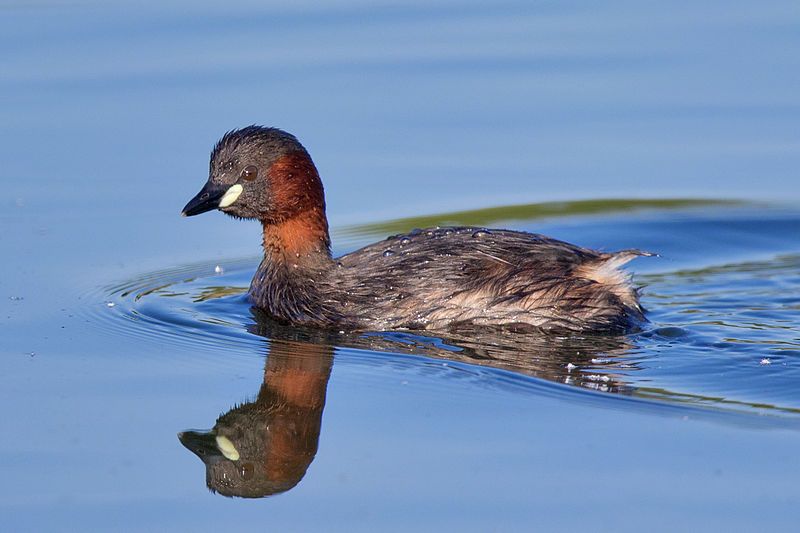
The little grebe, also known as dabchick, is a type of water bird belonging to the Grebe family. The genus name of the little grebe is derived from the Ancient Greek words ‘takhus’ meaning ‘fast’ and ‘bapto’ which means ‘to sink under’.
The specific ruficollis is a combination of the Latin words ‘Rufus’ meaning ‘red’ and ‘Collis’ which means ‘necked’. The term ‘Collis’ is itself derived from the Latin word ‘collum’ meaning ‘neck’.
This combination of words suggests that the little grebe has a red-necked appearance.
| Kingdom | Animalia |
| Phylum | Chordata |
| Class | Aves |
| Order | Podicipediformes |
| Family | Podicipedidae |
| Genus | Tachybaptus |
| Species | T. ruficollis |
4. Mallard
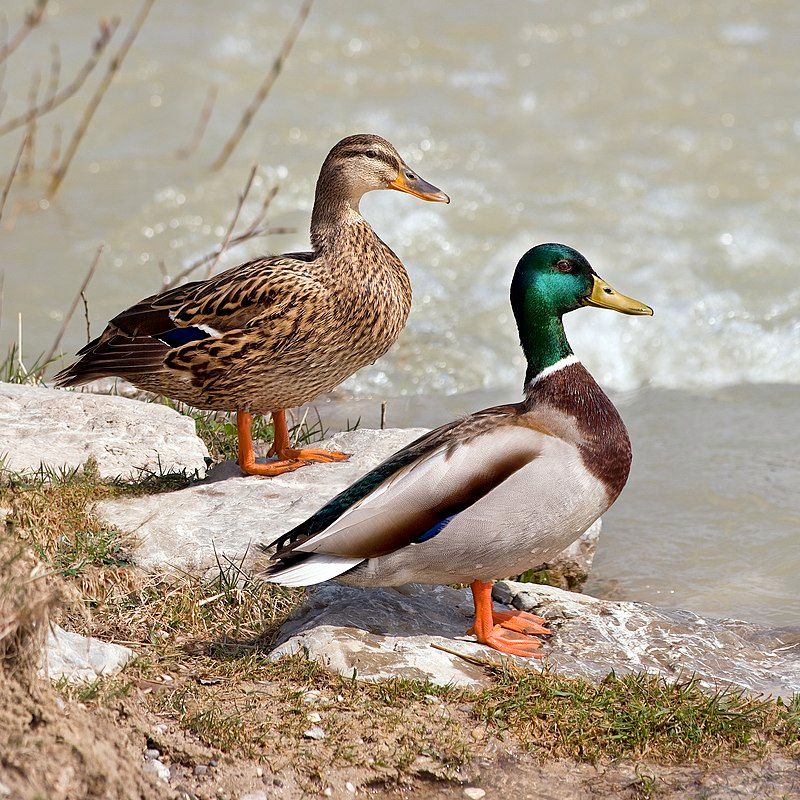
The mallard or wild duck is an extremely widespread species, found in regions around the world. This dabbling duck is native to temperate and subtropical areas of the Americas, Eurasia, and North Africa.
In addition, it has been successfully introduced to many other parts of the world, including New Zealand, Australia, Peru, Brazil, Uruguay, Argentina, Chile, Colombia, the Falkland Islands, and South Africa. The mallard is a highly adaptive species, capable of thriving in a wide range of environments.
Its wide distribution and success in colonizing new places is a testament to its adaptability. The mallard can inhabit a variety of aquatic habitats, such as shallow lakes, marshes, ponds, and rivers.
It is also a very social species, often seen in large flocks. The mallard is also an important species for the sport of duck hunting. It is the most popular game bird in the United States, with an estimated six million people participating in duck hunting each year.
The mallard is a popular game bird due to its size, taste, and abundance. As a result, it is important to manage the species in a sustainable manner to ensure its populations remain healthy.
| Kingdom | Animalia |
| Phylum | Chordata |
| Class | Aves |
| Order | Anseriformes |
| Family | Anatidae |
| Genus | Anas |
| Species | A. platyrhynchos |
5. Gadwall
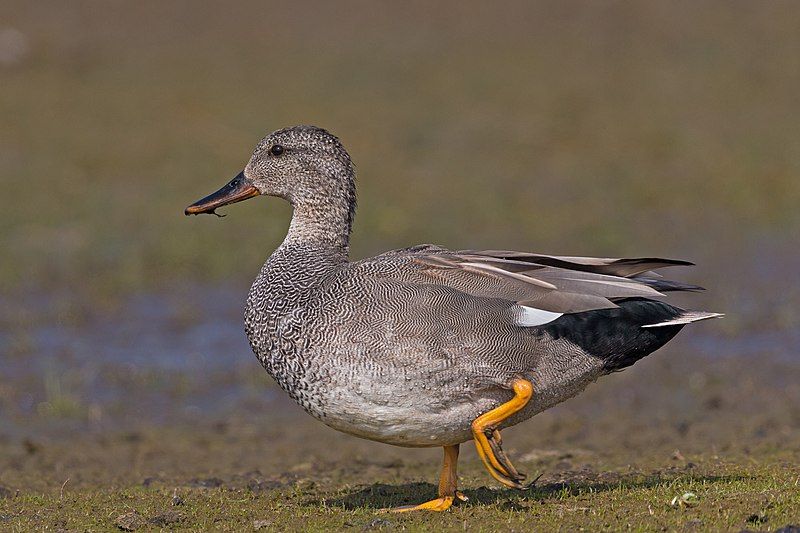
The gadwall is a species of duck that belongs to the family Anatidae. It is a dabbling duck, which means that it feeds by filtering small food items from the surface of the water or by tipping its head underwater.
This species is found in many parts of the world, from western Eurasia to the coasts of North America. It is a fairly small duck, with a long neck and a slightly upturned bill. The male gadwall has a gray body, a white underbelly, and a brown head.
Females tend to have duller plumage, with a light brown body and a white belly. During the breeding season, the males become more brightly colored, with a white patch on their wings. The gadwall is a common and widespread species and is usually seen in flocks of several birds.
It is known to be a good swimmer and can often be seen in shallow ponds or marshes.
| Kingdom | Animalia |
| Phylum | Chordata |
| Class | Aves |
| Order | Anseriformes |
| Family | Anatidae |
| Genus | Mareca |
| Species | M. strepera |
6. Mute Swan
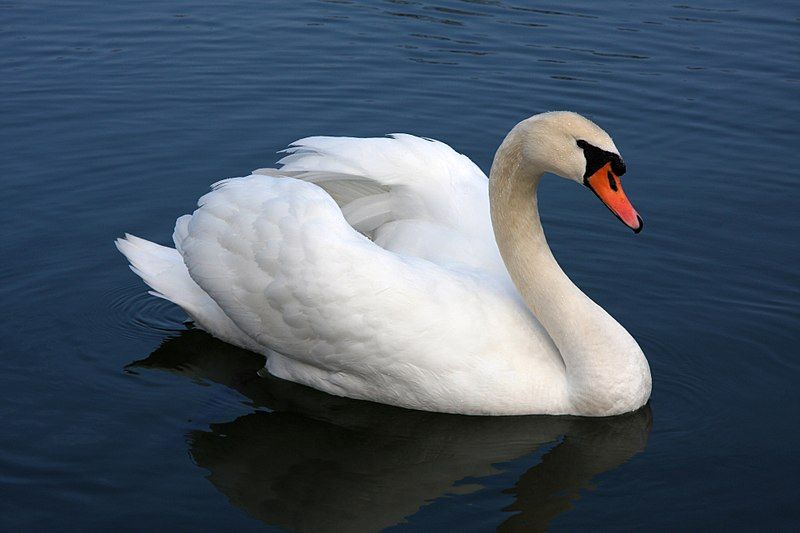
The mute swan is a species of swan that belongs to the Anatidae family, a family of waterfowl.
It is native to a large area of Eurasia and North Africa, extending from the United Kingdom, Scandinavia, and northern Germany eastwards to the Ural Mountains, and southwards to the Mediterranean and Black Sea coasts of Europe.
It can also be found in northern Africa, primarily in Egypt and Sudan. The mute swan is a large bird, reaching a length of up to 140 cm and a wingspan of up to 250 cm.
It has white plumage, with a long, S-shaped neck and an orange bill and legs. The mute swan is a rather sedentary bird, as it usually stays close to its breeding and wintering grounds. However, it is known to undertake occasional migrations, depending on the weather conditions.
During the breeding season, it forms monogamous pairs and builds large nests in shallow waters. The female swan lays an average of 4-7 eggs, which are incubated by both parents.
After hatching, the cygnets stay close to their parents, learning how to swim and how to feed them. The young swans reach sexual maturity at the age of three to five years. The mute swan is a protected species in many countries, as it is a symbol of grace and beauty.
It is also a popular species in aviculture due to its size and striking plumage. The mute swan is an omnivore, feeding on aquatic plants, small fish, mollusks, and insects.
It generally feeds in shallow waters, as it uses its long neck to reach food at the bottom of the lake or river.
| Kingdom | Animalia |
| Phylum | Chordata |
| Class | Aves |
| Order | Anseriformes |
| Family | Anatidae |
| Genus | Cygnus |
| Species | C. olor |
7. Tufted Duck
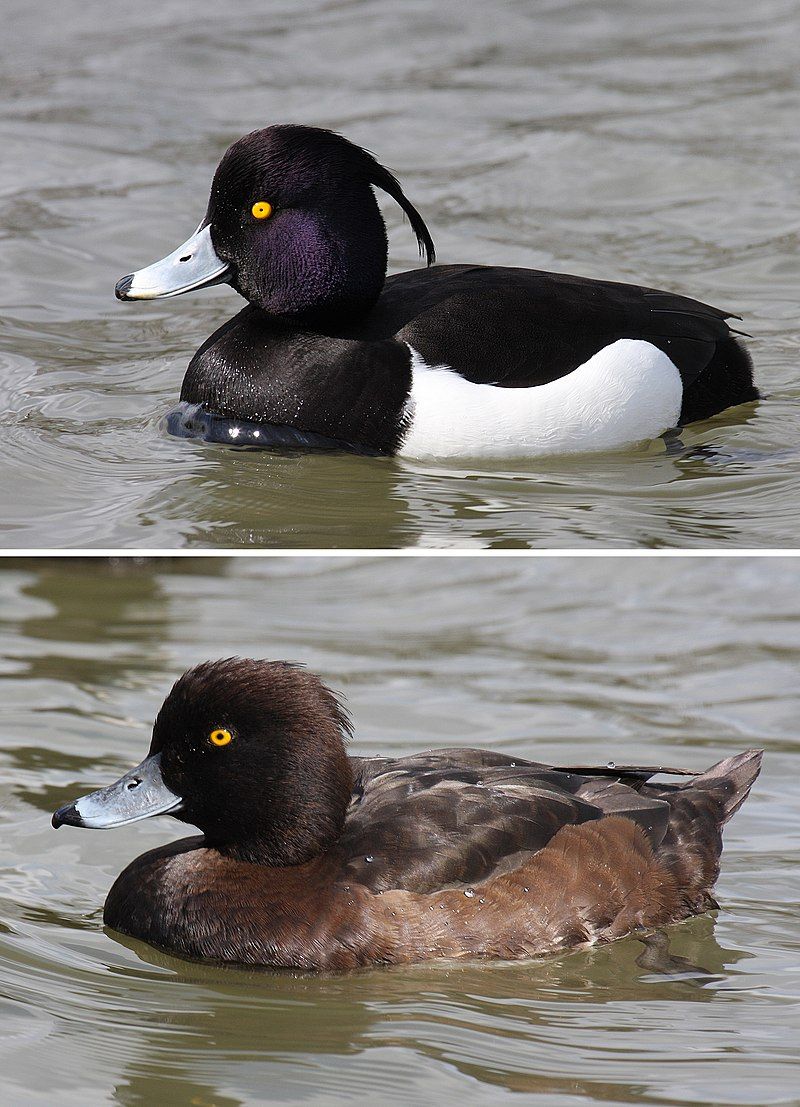
The tufted duck, also known as the tufted pochard, is a small diving duck with a population of nearly one million birds, mainly located in northern Eurasia.
Its scientific name, Aythya fuligula, is derived from two Latin words: aithuia, an unidentified seabird mentioned by various authors such as Hesychius and Aristotle, and fuligo and gula, which mean “soot” and “throat”, respectively.
The tufted duck is a small-bodied duck that has a white head, a black chest, and a distinctive tuft of feathers on the back of its neck. Its bill is yellowish-orange and it has a dark gray back and wings.
The tufted duck is a strong swimmer and feeder and is often seen in large groups in ponds and shallow waters. The ducks feed on aquatic plants, small fish, insects, and other small aquatic animals.
During the breeding season, the tufted duck builds a nest in shallow water and lays between eight and thirteen eggs. The female tufted duck then incubates the eggs until they hatch. The young ducks can fly after two months.
The tufted duck is a resilient species with a population of close to one million birds, and its numbers are believed to be stable.
| Kingdom | Animalia |
| Phylum | Chordata |
| Class | Aves |
| Order | Anseriformes |
| Family | Anatidae |
| Genus | Aythya |
| Species | A. fuligula |
8. Pygmy Cormorant
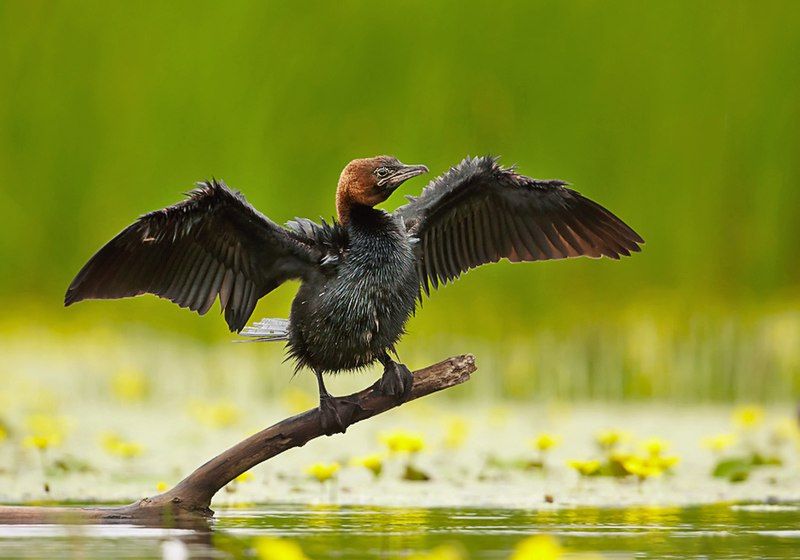
The Pygmy Cormorant is a member of the Phalacrocoracidae family, a family of seabirds. This species breeds primarily in south-eastern Europe and south-western Asia but is partially migratory.
Northern populations of this species will move further south in the winter, typically staying within its breeding range. It is also a rare migrant, with sightings of this species in Western Europe occurring on occasion.
The Pygmy Cormorant is a unique species that has adapted its behavior to balance the needs of its breeding and wintering grounds.
| Kingdom | Animalia |
| Phylum | Chordata |
| Class | Aves |
| Order | Suliformes |
| Family | Phalacrocoracidae |
| Genus | Microcarbo |
| Species | M. pygmaeus |
9. Squacco Heron
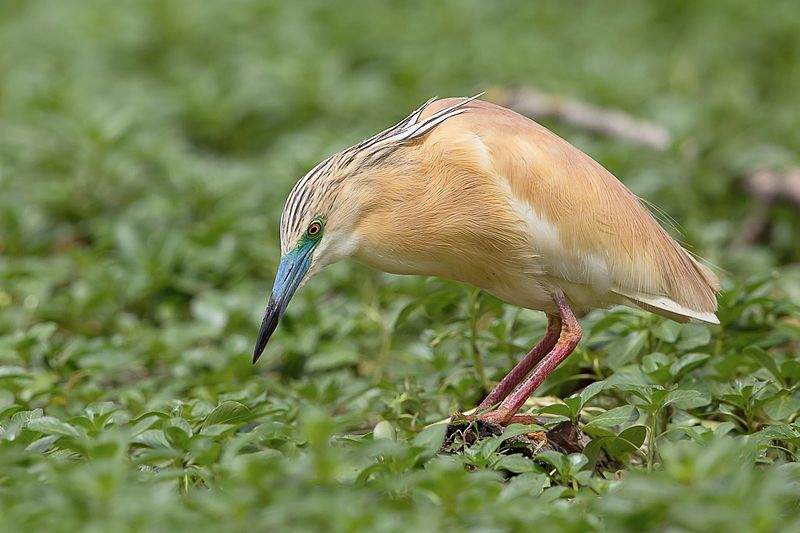
The Squacco Heron is a small heron, approximately 44-47 cm in length with a body size of 20-23 cm and a wingspan of 80-92 cm. It is native to the Old World, meaning it is native to Europe and the greater Middle East region.
This heron breeds in southern Europe and the Greater Middle East and is found in freshwater wetlands and estuaries. It is mainly found in shallow marshes, reed beds, or other wetland habitats such as riverbanks and streams.
The Squacco Heron is a solitary bird, although it may gather with other herons to feed or roost. During the breeding season, it nests in colonies, typically in tall trees or reed beds. It mainly feeds on fish, frogs, tadpoles, insects, and other small aquatic animals.
It is an opportunistic feeder, and will also eat mollusks, crustaceans, and small reptiles. The Squacco Heron is an impressive sight in flight, with its long wings and neck outstretched. It is a graceful bird that can be observed in its natural habitat with patience and luck.
| Kingdom | Animalia |
| Phylum | Chordata |
| Class | Aves |
| Order | Pelecaniformes |
| Family | Ardeidae |
| Genus | Ardeola |
| Species | A. ralloides |
10. Black-tailed Godwit
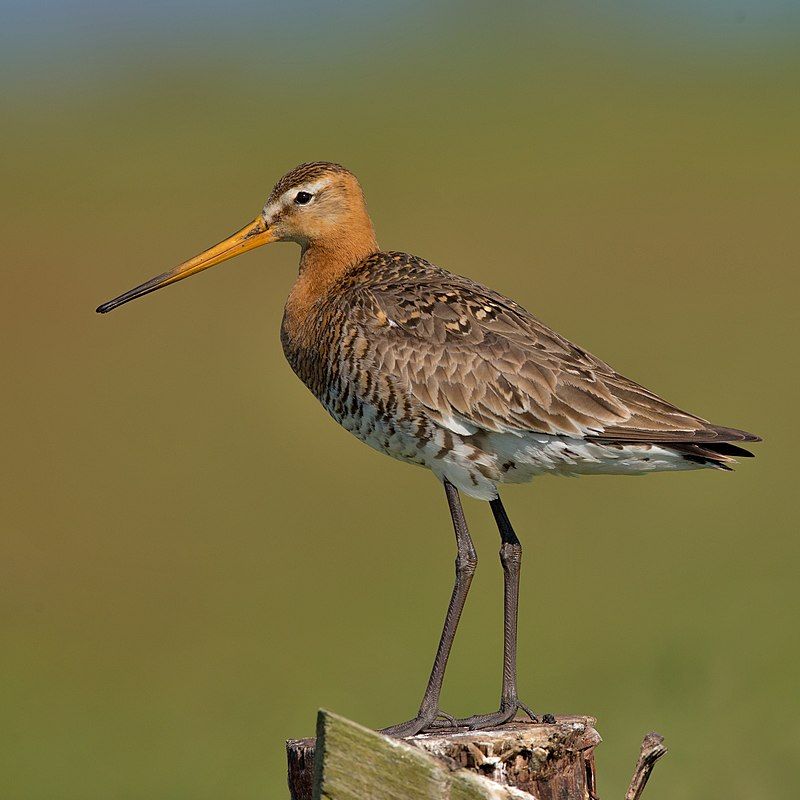
The black-tailed godwit is a species of shorebird that is found in many parts of the world. It is a large bird, with long legs and a long bill, and was first described by the famous naturalist Carl Linnaeus in 1758.
Its scientific name is Limosa limosa, and it is a member of the genus Limosa, which includes many other species of godwits. The black-tailed godwit is a migratory species, found in Europe, Asia, and North America during the breeding season, and in Australasia during the non-breeding season.
It prefers to inhabit wetlands, estuaries, and other wetland habitats, where it feeds on small invertebrates such as worms and mollusks.
It is a social species, often seen in large flocks with other waders. The black-tailed godwit is an iconic species and is an important part of many wetland ecosystems.
It is also a species that is highly valued by birdwatchers and is often featured in birding festivals and events. Despite its iconic status, the black-tailed godwit is facing increasing threats due to habitat loss, pollution, and climate change.
Conservation efforts are needed to ensure the species’ future survival.
| Kingdom | Animalia |
| Phylum | Chordata |
| Class | Aves |
| Order | Charadriiformes |
| Family | Scolopacidae |
| Genus | Limosa |
| Species | L. limosa |
11. Common Moorhen
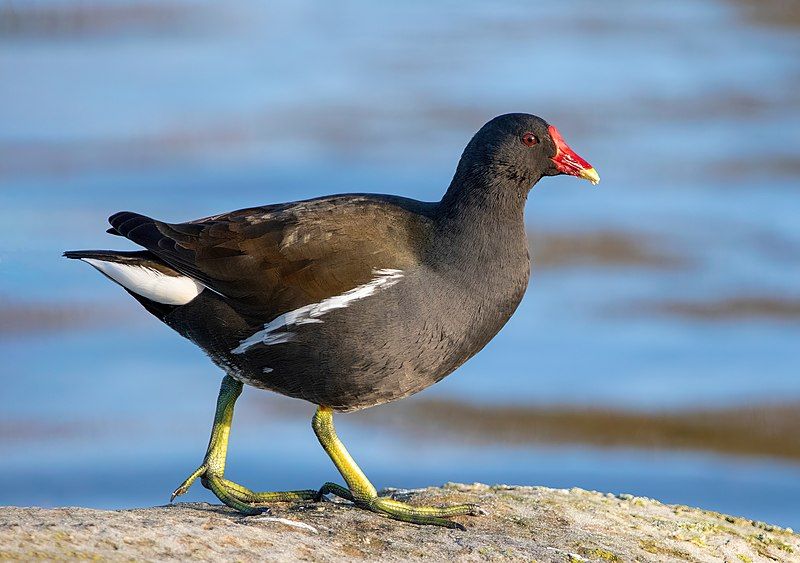
The common moorhen is a bird species belonging to the rail family and is found in many parts of the Old World. It is sometimes referred to as the waterhen or swamp chicken, reflecting its typically aquatic environment.
The common moorhen prefers to inhabit well-vegetated marshes, ponds, canals, and other wetlands, where it finds plenty of fish, insects, and other food sources. In addition to its aquatic habitats, the common moorhen is also found near fields, meadows, and other grassy areas.
This bird species is usually found in pairs or small groups and is known to be a strong swimmer. It has a wide variety of vocalizations, including grunting, cackling, and squawking.
The common moorhen is relatively large, measuring approximately 33 cm in length and weighing up to 340 grams. It is generally brown, with a white belly and black-tipped wings and tail. Its diet consists mainly of aquatic plants, frogs, fish, and insects.
| Kingdom | Animalia |
| Phylum | Chordata |
| Class | Aves |
| Order | Gruiformes |
| Family | Rallidae |
| Genus | Gallinula |
| Species | G. chloropus |
12. Cattle Egret
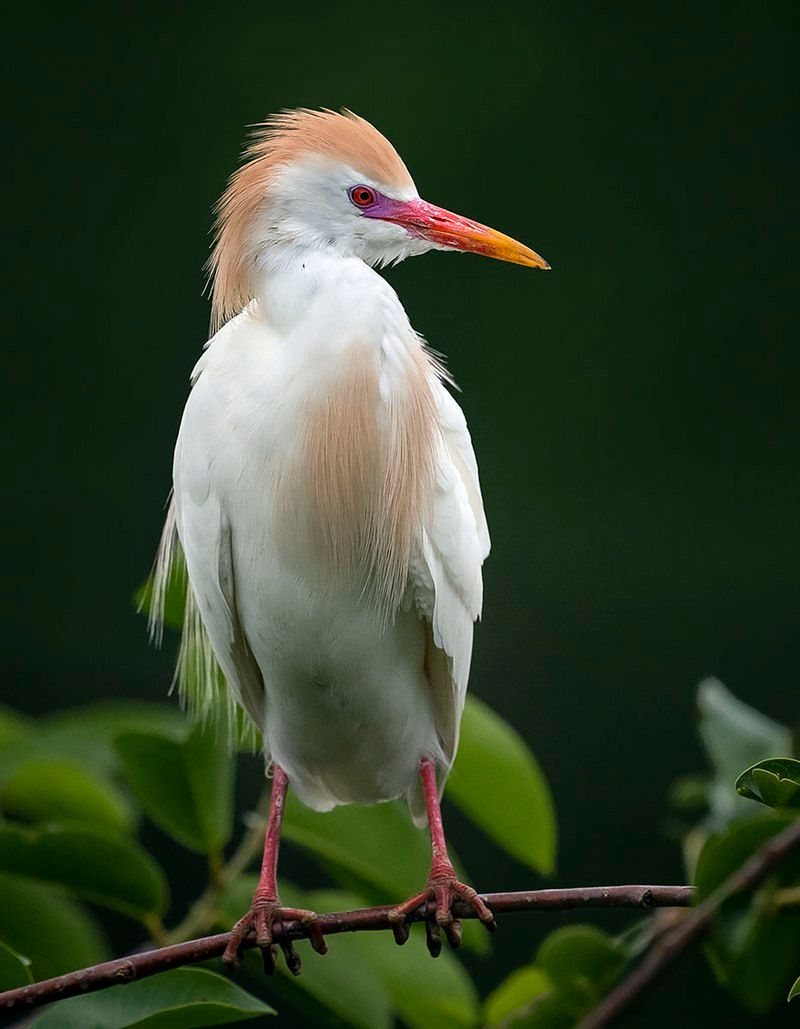
The cattle egret is a species of heron that is found in warm climates around the world. It is the only member of the monotypic genus Bubulcus, meaning that it is the only species in its family.
However, some scientists recognize two subspecies of the cattle egret: the western cattle egret and the eastern cattle egret.
These two subspecies are distinguished by their different geographical ranges, with the western cattle egret found in the Americas and the eastern cattle egret found in Africa, Asia, and Australia.
These two subspecies also have different sizes and coloration, with the western cattle egret being slightly larger and having a darker coloration than the eastern cattle egret.
The cattle egret is usually found in open areas like grasslands, wetlands, and agricultural fields, where it can feed on small insects, fish, and other aquatic animals. It has a wide range of habitats, from the tropics to the subtropics and even the warm-temperate zones.
| Kingdom | Animalia |
| Phylum | Chordata |
| Class | Aves |
| Order | Pelecaniformes |
| Family | Ardeidae |
| Genus | Bubulcus |
| Species | B. ibis |
13. Curlew Sandpiper
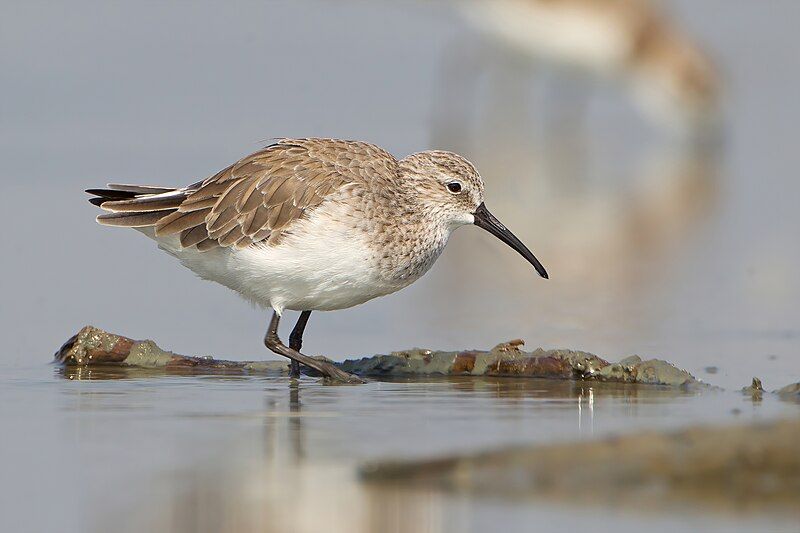
The curlew sandpiper is a small shorebird that breeds on the tundra of Arctic Siberia. It is a migratory bird, spending its winters in Africa, as well as in south and southeast Asia, Australia, and New Zealand. It is also known to make occasional visits to North America.
During the breeding season, the curlew sandpiper inhabits the tundra of Arctic Siberia, where it nests and raises its young. The tundra is characterized by its cold, treeless, and largely flat terrain, making it an ideal habitat for this species.
In the winter months, the curlew sandpiper migrates long distances to escape the cold of Siberia. Its wintering grounds span from Africa, south and southeast Asia, to Australia and New Zealand.
It is also known to make occasional visits to North America, making it a vagrant species on the continent. The curlew sandpiper is an important species in the ecosystem, playing a crucial role in the food chain.
Its migratory habits also make it an interesting species to study, as it reveals the fascinating behavior of long-distance migrants.
| Kingdom | Animalia |
| Phylum | Chordata |
| Class | Aves |
| Order | Charadriiformes |
| Family | Scolopacidae |
| Genus | Calidris |
| Species | C. ferruginea |
14. Common Greenshank
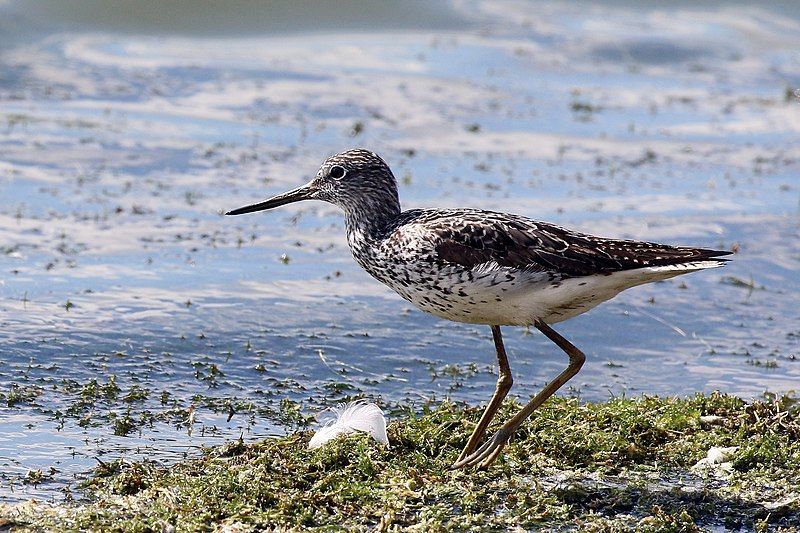
The common greenshank is a type of water, part of the larger family of Scolopacidae, which is made up of typical wading birds. The genus name for the greenshank is Tringa, and this name was given by Aldrovandus in 1599.
The name was derived from the Ancient Greek term trunks, which was used to refer to a type of wading bird that had a thrush-like size, a white-rumped tail, and a habit of bobbing its tail when wading. This type of bird was also mentioned by Aristotle.
| Kingdom | Animalia |
| Phylum | Chordata |
| Class | Aves |
| Order | Charadriiformes |
| Family | Scolopacidae |
| Genus | Tringa |
| Species | T. nebularia |
15. Common Redshank
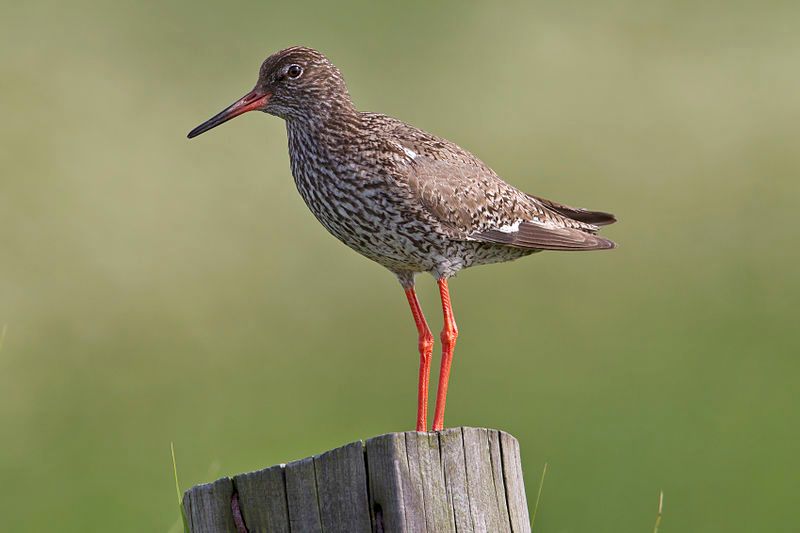
The common redshank is a species of wader bird that is found across the Eurasian region. It belongs to the Scolopacidae family, which is the largest family of wading birds in the world.
The common redshank is a medium-sized shorebird, with a reddish-brown back, white underparts, and long, reddish legs. It has a long, straight bill, and a distinctive call that is a loud, rattling “tuk-tuk-tuk”.
The common redshank feeds on small insects, crustaceans, worms, and mollusks found in shallow water or mudflats.
It is known to be an adaptable bird and can be found in a variety of habitats, from the estuaries and coasts of Europe and Asia to the marshes and wetlands of Africa. The common redshank is a sociable bird and is often seen in large flocks in the winter months.
It is also a migratory bird and will travel south in the winter to warmer climates.
| Kingdom | Animalia |
| Phylum | Chordata |
| Class | Aves |
| Order | Charadriiformes |
| Family | Scolopacidae |
| Genus | Tringa |
| Species | T. totanus |
16. Marsh Sandpiper
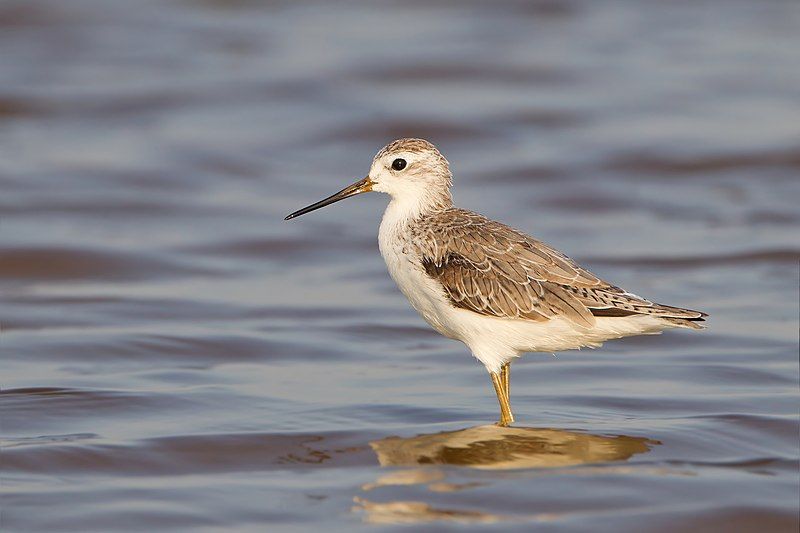
The marsh sandpiper is a small wading bird that can be found in many places across Europe and Asia. It is a rather small shank, meaning it is shorter and smaller than other types of waders.
This species typically breeds in open, grassy wetlands in places like the steppe and taiga regions in easternmost Europe and in the Russian Far East.
The marsh sandpiper can inhabit these areas due to its small size and the fact that it feeds on small aquatic invertebrates and insects. This species is often seen in large flocks, which is likely due to its migratory habits.
It breeds in the summer months and winters in the south, often in Africa or the Middle East. The marsh sandpiper is an important species of wader, helping to keep wetland ecosystems healthy and balanced.
| Kingdom | Animalia |
| Phylum | Chordata |
| Class | Aves |
| Order | Charadriiformes |
| Family | Scolopacidae |
| Genus | Tringa |
| Species | T. stagnatilis |
17. White Stork
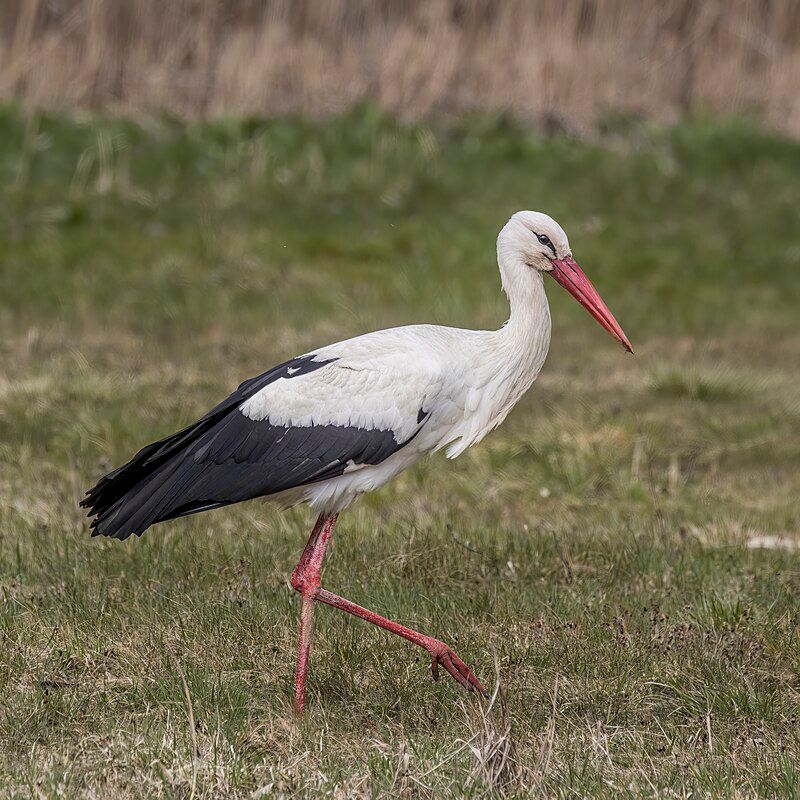
The white stork is a majestic bird belonging to the Ciconiidae family of birds. It is easily recognizable due to its striking white plumage and black wings. The adults of this species have long, pointed red beaks and bright red legs.
On average, they measure between 100 and 115 centimeters from the tip of their beak to the end of their tail and have a wingspan of 155 to 215 centimeters. The white stork is an impressive sight to behold, especially in flight.
With its wide wingspan and long legs, this bird is capable of soaring through the sky with ease. It has a long history of being revered as a symbol of good luck in many cultures, and its presence is often seen as a sign of good luck.
The white stork is also known for its strong sense of family and is often seen nesting in large colonies with other birds of its species. The white stork is an important species for the health of the environment.
It is known to feed on a variety of small animals, such as frogs, mice, and insects, thus helping to keep insect and rodent populations under control. Additionally, the white stork helps disperse seeds and plant matter, aiding in the spread of vegetation across the landscape.
In conclusion, the white stork is a magnificent bird that is a key species in many ecosystems. Its striking plumage and impressive size make it an awe-inspiring sight in the sky.
It is also an important species for the environment, helping to control insect and rodent populations while dispersing seeds and plant matter. Finally, its presence is often seen as a symbol of good luck, making it a beloved species around the world.
| Kingdom | Animalia |
| Phylum | Chordata |
| Class | Aves |
| Order | Ciconiiformes |
| Family | Ciconiidae |
| Genus | Ciconia |
| Species | C. ciconia |
Conclusion
Birds in Verona are an integral part of the city’s natural environment. They provide an important food source for a variety of wildlife, and they add to the beauty of the city with their vibrant colors and melodious songs.
While there are concerns about the impact of urbanization on bird populations in Verona, the city is taking steps to protect and conserve its bird species, and its citizens are becoming more aware of the importance of preserving the city’s birdlife.
With the help of conservation efforts and support from the local community, Verona’s bird populations can continue to thrive for years to come.